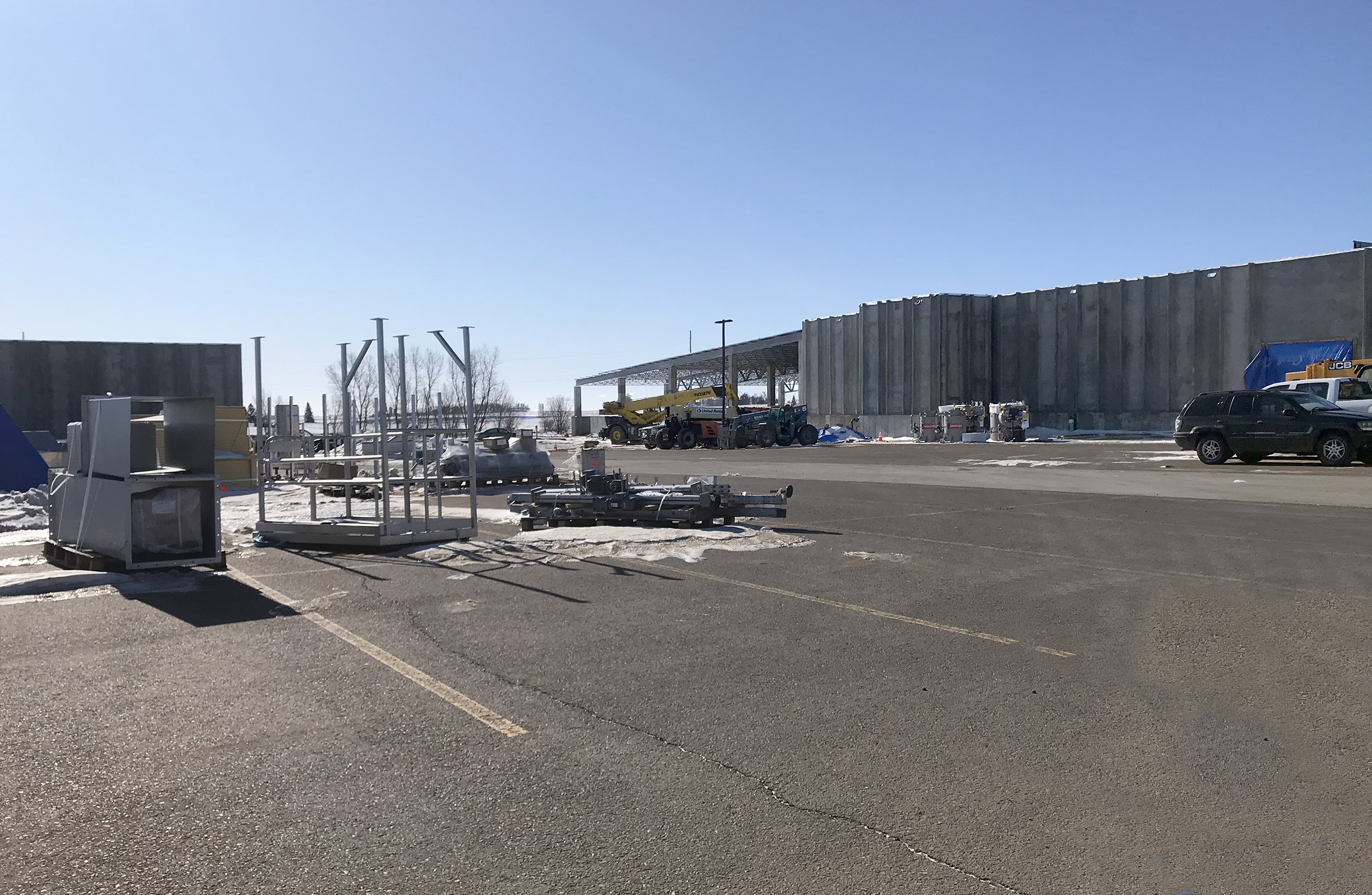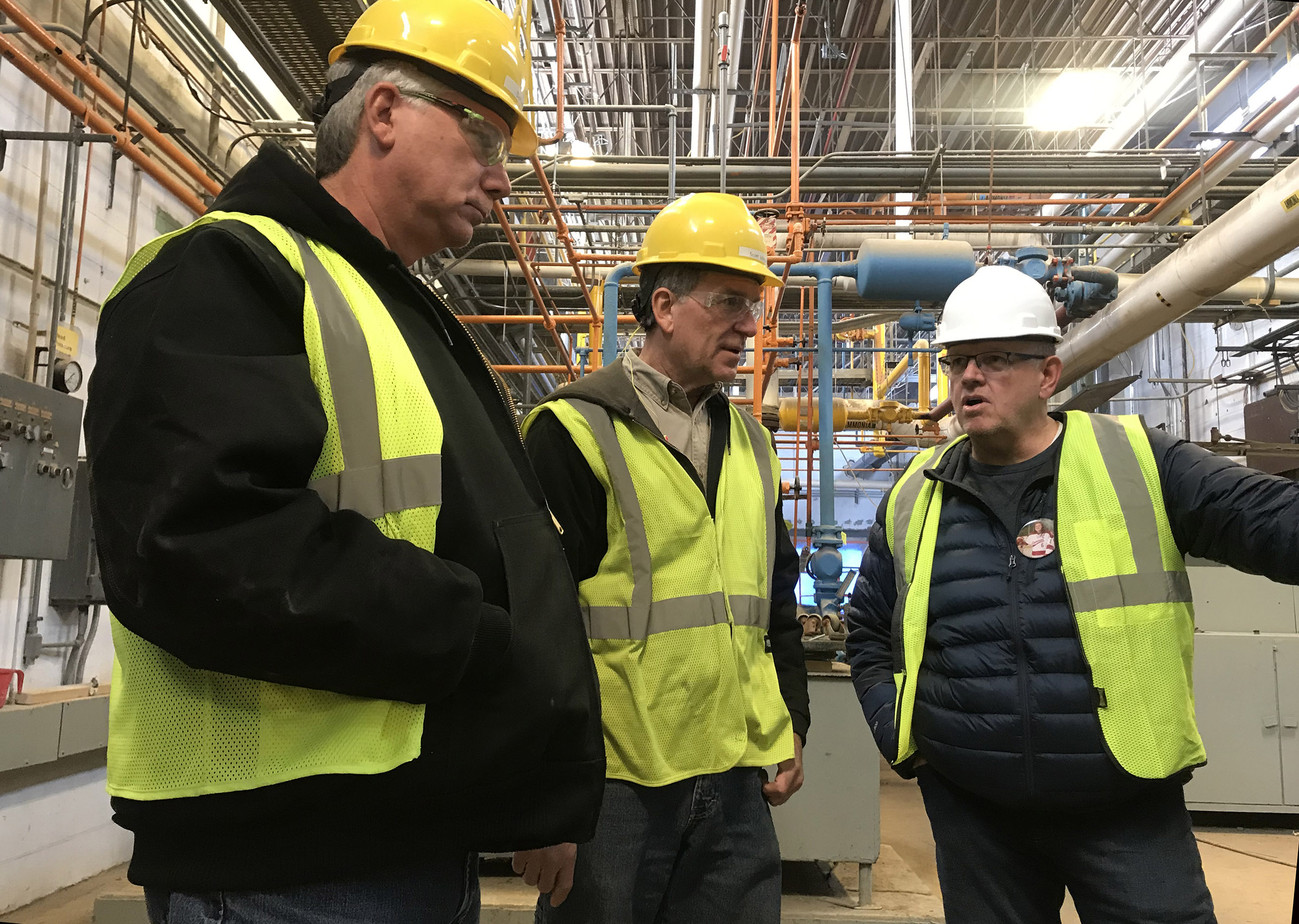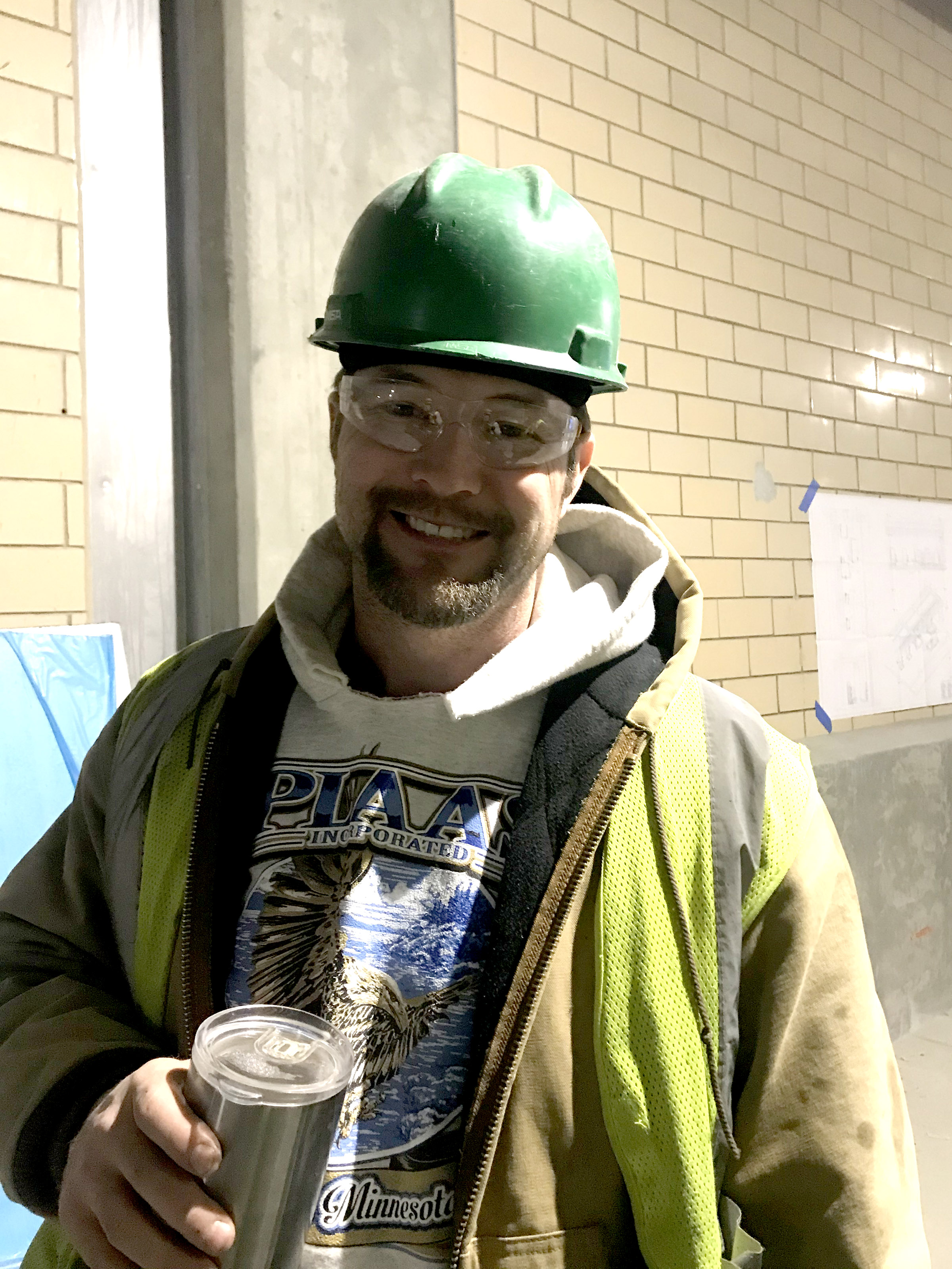 ,
,  ,
,  ,
,  ,
,  ,
,  ,
,  ,
,  ,
,  ,
,  ,
, 
In a matter of weeks, Premium Minnesota Pork will accept its first delivery of antibiotic-free hogs for processing at its Luverne plant.
“The pigs that are coming here are already on the ground (born),” company president Dan Paquin said during a recent tour of construction progress.
May 4 is the production start day in the former Gold’n Plump facility.
The Hospers, Iowa, company will process up to 2,500 hogs in the facility that’s undergoing a $30 million retrofit and expansion.
As construction nears completion and as key processing equipment falls into place, tours are getting more frequent to track the rapid progress.
City Administrator John Call and Luverne Mayor Pat Baustian toured Feb. 13 and Rock County Commissioners toured Feb. 18, and Paquin has been speaking to local civic groups about the company.
“This is one busy area,” Paquin said Feb. 13 leading a hard-hat-clad group through a maze of construction workers and heavy equipment.
A sloped roof is now in place over the barn that will receive up to 2,500 hogs per day at the south end of the property. The animals are finished in outdoor facilities in the tri-state area on privately owned family farms that regularly audited for PMP standards.
Paquin noted that all operations are indoors. Hogs are delivered directly from trucks to the barn where they are allowed to relax before being gently ushered onto a carousel that lowers them 30 feet below ground into a CO2 chamber.
Moments later they emerge in a permanent slumber to be sent through a finely tuned production line with unique efficiencies for each step along the way.
“Pigs come in one end and pork goes out the other,” Paquin said.
Hair removal is an important and time-consuming part of the process, and that’s why the company invested two large dehair machines, weighing roughly 40,000 pounds each.
Heated water and a series of metal paddles remove most of it without damaging the hide, which is also sold.
Paquin talks a lot about temperature when he explains hog processing.
The coolers represent about 17,000 square feet of the 128,000-square-foot plant, and they involve the most automated aspect of production.
“The cut floor really appreciates when they come out the same temperature,” said engineer Scott Johnson, “not too cold, or too soft, because it makes it more difficult to cut.”
Because meat is best handled at 36 to 38 degrees, cooling a 102-pound carcass is a big step.
“We’ve got to remove almost 70 degrees of heat and we do it in about 15 hours,” Paquin said. “And you use the balance of the time to keep them regulated so that people on the cut floor can do their jobs.”
The coolers are divided into two bays, each with 100-foot-long rails designed to carry a total of 2,500 hogs, each separated by just the right distance for efficient cooling.
“It’s all computer driven” Paquin said. “In theory nobody should need to be in here.”
There are 10 rails in one cooler, and eight in the other. The meat chills rapidly and then equalizes to the desired temperature of 37 degrees.
The cooling process takes about 15 hours. “They hang in there overnight, so what we harvest today, we cut tomorrow,” Paquin said.
Cut floor employees work in a 40-degree environment.
Large hoppers receive hams for grading, and the shoulders, bellies, hams, ribs all get processed and broken down.
Some are packaged with store labels for direct shipment to shelves, others get vacuum packed and boxed for loading on refrigerated trucks.
On a large screen in a small conference room, the whole process is mapped in a computer-aided drawing with a gold line showing the travel path of the product.
“It should flow … this is wide open and everything should just flow,” Paquin said. “It comes in from the south and goes out through the north.”
He talked about most every aspect of the animal getting utilized by an end market, from the blood and intestines to the skull and hooves.
Rendering is trucked away, and wastewater is treated on site before effluent heads to the city’s wastewater treatment facility.
Two 250,000-gallon tanks remove solids and kill bacteria with microscopic “bugs.” A good share of the remaining solids are used for compost.
The company plans to hire 250 production workers (at $13 to $20 per hour) in Luverne. That number could increase to more than 300 employees, depending on growth.
In addition, the company paid $6.76 million for necessary upgrades to Luverne’s wastewater facilities due to the plant’s effluent load into the city’s system.
Paquin said a community grand opening celebration is being planned ahead of the plant’s startup on May 4.


